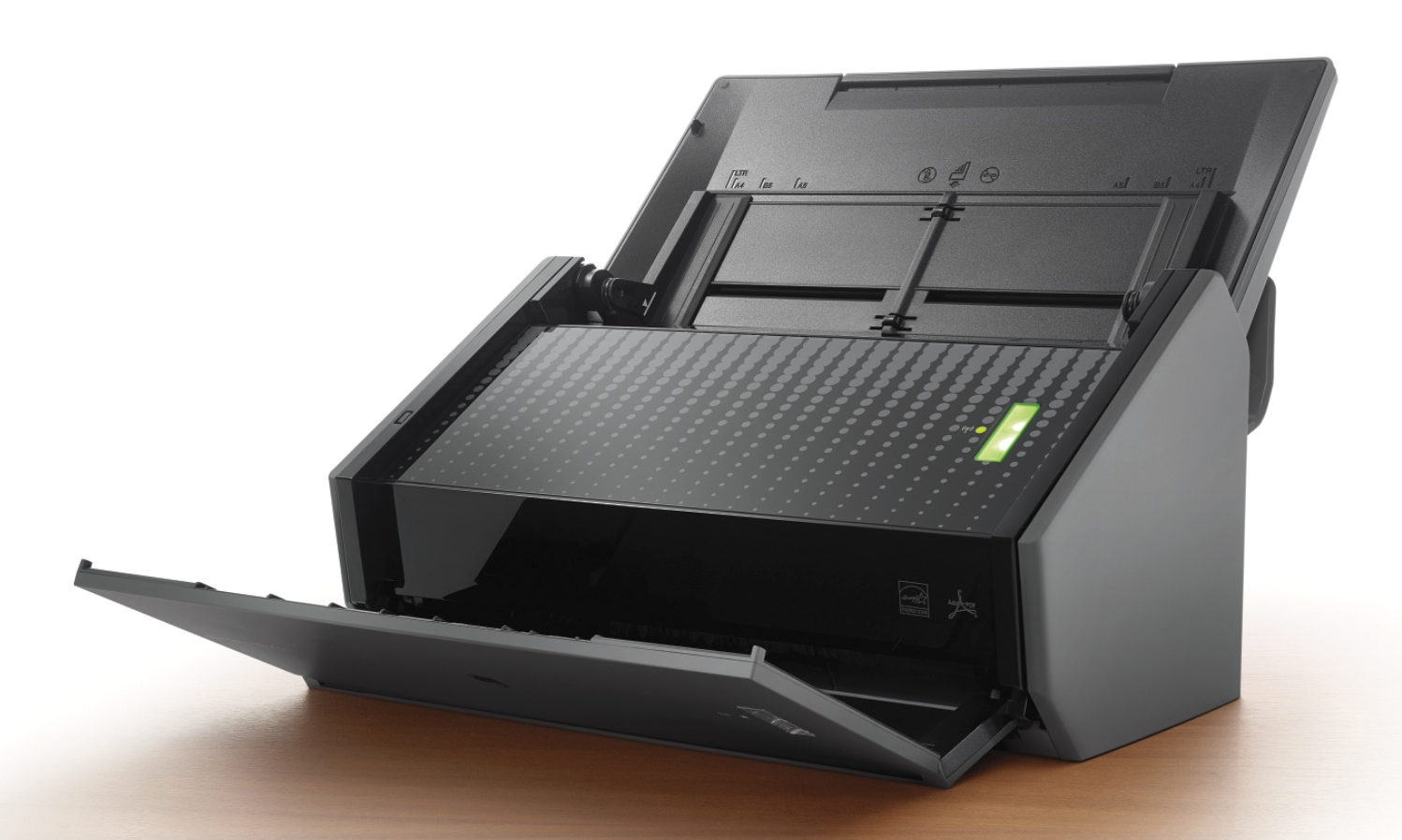Messy offices and desks are something that many of us have problems with. Over the years my office has gone through cycles ranging from minor embarrassment to total disaster. Occasionally, when I have had enough of the mess, I try to organize things, but soon piles of paper build up, staking their claim to my desk. Chaos occurs because I don’t have a system to deal with daily organization.
Paper is my biggest problem, so I decided to tackle it first. Dealing with paper should be an easy thing, but problems occur when an item doesn’t neatly fall into one of my pre-existing folders. Sometimes I’ll create a new folder if I feel that it warrants one, but often times it just gets put into a pile to be sorted later. Instead of getting sorted out, the pile soon grows and grows. I decided to attack the problem directly by trying to go paperless.
My tool of choice for this is the ScanSnap- Evernote Edition Scanner. This scanner is the special branded Evernote edition of the Fujitsu ScanSnap iX500 Scanner. The software for the regular iX500 is more versatile and has a few more features than the Evernote edition, but the workflow with Evernote is what appealed to me most. The Evernote edition is designed to automatically scan in documents, business cards, photos, and receipts into Evernote. I have used Evernote daily to store little bits of information and clipped web pages, so managing scanned documents seemed pretty natural. The ScanSnap- Evernote Edition comes with one year of Evernote Premium- you’ll definitely need managing this amount of data.
Now, as soon as something new comes across my desk, I deal with it immediately, deciding if it’s worth scanning or not. The ScanSnap is a duplex scanner, able to quickly scan both sides of a document at once. Multipage documents placed into the document feeder are scanned as quickly as they can be pulled in. Unless it’s an important document where I need to keep the original, it gets tossed in the shredder.
Scanned items show up in Evernote in various notebooks that you can set. From there you can label the items and file them into other notebooks. You can have the same problem as physical filing, the proliferation of notebooks but it is a lot easier and quicker to create virtual ones. But if you have too many of them it’s a little bit awkward dragging and dropping documents to the correct notebook.
One of the big benefits of filing things digitally is that instead of being buried in a physical folder, each document that is scanned into Evernote becomes searchable. I don’t know how many times I’ve found information that would be impossible to find if I had to go to the file cabinet. Documents are no longer just documents, but useable information.
There are a few little quirks in the workflow. The ScanSnap- Evernote Edition uses size to automatically differentiate between business cards, receipts, and documents. If you have two different documents, you must scan them individually or they end up in one file. If you have different sized items, you have to set it manually to document to get everything to scan into one document. Sometimes things are scanned in and are upside down and need to be manually rotated. You would think with Evernote’s automatic OCR that it would take care of it 100% of the time. It doesn’t.
Note: There is a video on the Evernote site that shows a bunch of papers, photos, receipts, and business cards sitting in the document feed being scanned in and automatically sorted. I think it is somewhat misleading, because Evernote can not sort between two different documents, any letter sized documents that are together gets scanned into the same document. Evernote suggests putting a business card between each letter sized document to break things into separate documents. In reality this not very practical. I have gotten used to scanning things in one at a time and this works fine for me.
The ScanSnap- Evernote Edition at $495 is a little pricier than other scanners, but to me it has been worth every penny. The ScanSnap can be found in Evernote Market.


No Comments